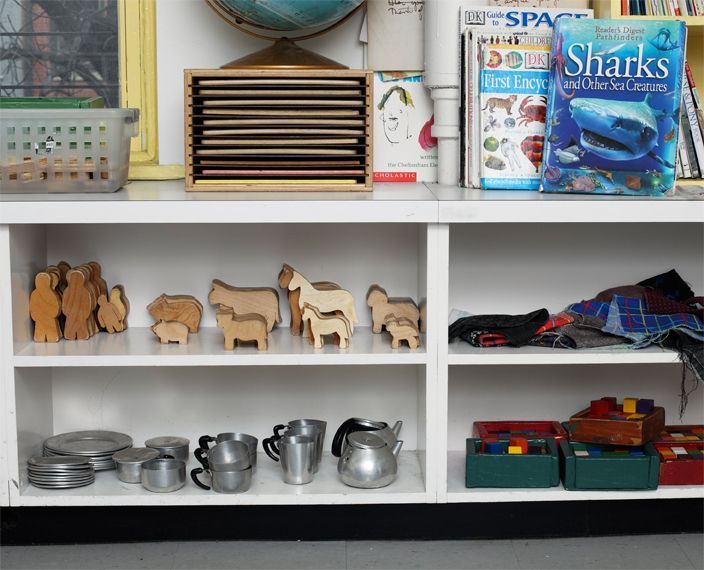Lower School
The first years in school are vitally important for establishing independent work habits and developing social skills. The Lower School Program is designed to provide a firm grounding in these areas, as well as opportunities for cognitive, emotional, and physical growth.
Lower School classrooms are equipped with ample space and an abundant supply of carefully chosen open-ended materials, including blocks, paint, clay, paper, wood, sand, and water. These materials, along with the teachers who expertly guide their use, promote children’s active involvement and independence while also inspiring creativity and cooperation. Children use the materials to explore and experiment, in the process building a foundation in the academic disciplines of social studies, reading, writing, math, and science. As the children advance through the Lower School, academic skills are taught more formally.

Because children naturally learn to read and write at different rates and in various ways, our approach to the development of literacy skills is individualized. Teachers read aloud to their Groups daily—nonfiction, fiction, and poetry—selecting from the wide range of books found on the classroom shelves. Long before the children are able to decode the complex symbols that make up words, they develop a rich appreciation for books and an enjoyment of literature. As the children begin to express themselves on paper, their drawings become the basis for stories that are often recorded by teachers through dictation. Beginning in the 5s, children devote time each week to creative story writing and sharing. They also begin to label their block buildings with handwritten signs and are increasingly able, on their own, to read the research books they borrow from the Library. In the 7s, children begin to spend a half-hour each day reading for pleasure in the Library—a School tradition that continues through the 13s.
Math and science concepts are embedded within the children’s daily work with the basic materials and become more complex with each passing year. For example, children begin to hone their understanding of volume while pouring at the water table, and their grasp of fractions and patterns develops while experimenting with unit blocks. In combination with formal lessons, repeated use of the basic materials gives children a conceptual understanding that goes beyond the memorization of facts and formulas.

Central to the Lower School are the wooden unit blocks designed by Caroline Pratt, which are now used in schools worldwide. At City and Country, block building frames the context for the Social Studies program. Blocks, and the dramatic play that accompanies block building, offer children multiple and diverse opportunities to express their understanding of the social and physical world in which they live. From the early efforts of two-year-olds to stack and balance blocks, to the dynamic communities of stores, services, and homes built by the six- and seven-year-olds, the children experience a growing and vital sense of community. Working collaboratively to design block buildings, they learn to articulate and solve problems, to negotiate, and to cooperate.
Trips are an essential component of the Social Studies Program, providing a wealth of opportunities for firsthand research. The youngest children visit sites within the School, such as the Library and School Store. At 4, Groups venture into the neighborhood, and by the 7s, children travel throughout the city. Their observations provide new content for block building, dramatic play, discussions, and research.
In the 7s, children engage in a formal study of the infrastructure and geography of New York City. Through extended block work, they explore the relationships among the city’s systems of government, transportation, communications, commerce, and utilities. New issues continually arise: Who makes the laws, and how are they carried out? How does traffic flow? Where does water come from? Their study culminates with the building of a permanent city, complete with running water and electricity, and an historical study of the Brooklyn Bridge.
The city study encourages collaboration, and the children meet daily to discuss the planning and execution of their designs. Because each building is part of the greater block city, children are expected to work together toward common ends, to resolve conflicts, to make compromises, and to recognize each other’s needs and abilities—all of which adds to their understanding of the complexities of everyday life in a social democracy.
In expanding their world in this way, the children naturally face challenges and enhance their skill in math, geography, language arts, and science. Children leave the Lower School prepared to take on the more advanced academic and social responsibilities of the Middle School.

